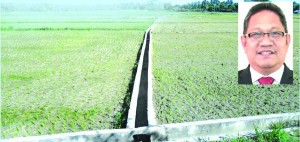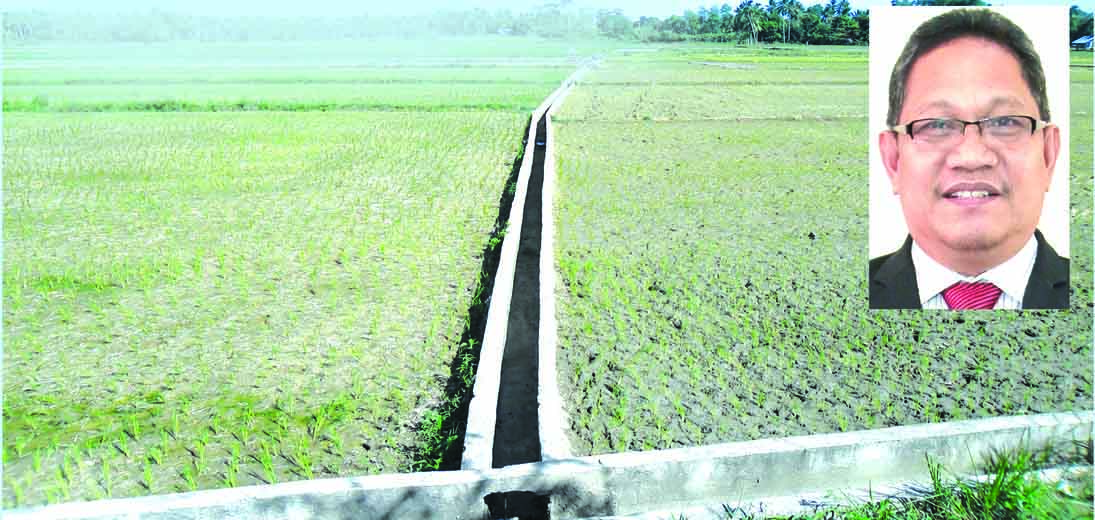
Damage: P312M PAGASA: Worst El Niño ever
The province of Bohol was declared Thursday under a State of Calamity due to mounting damages brought about by the prevailing El Niño which has dried up water sources and thousands of hectares in farm land in the countryside.
Of the 47 towns, 27 are heavily affected with the dry spell while initial estimated damage reached to P312 million. Some 12,000 hectares of rice fields, cornfields, high-value crops, aqua farms were damaged by this prevailing dry spell.
With the temperature reaching as high as 34 degrees, livestock and poultry, including some fishpond are incurring huge damages during the past months. The milk production at the Ubay Stock Farm is likewise feared to get affected if this dry spell continues.
Meanwhile, Director Vic Milano of the Philippine Atmospheric, Geophysical and Astronomical Services Administration (PAG-ASA) in a phone interview from Manila confirmed to The Chronicle yesterday that this is the longest and worst El Niño to hit the country. He said it’s already 13 months since they declared a full blown El Niño affecting the country.
He likewise confirmed that Bohol is one of the 27 provinces badly affected by the dry spell thus he was not surprise when informed by The Chronicle that Bohol was declared last Thursday as under the State of Calamity. He said this El Niño started in November 2014 when the temperature at the Pacific Ocean reached to 3 degrees above the normal level of 27 degrees, he said.
This drought is expected to last until the last week of May or early weeks of June this year, the Boholano PAG-ASA head said.
Aside from the farmland badly affected, some areas in the province are now getting difficulties on their source of drinking water.
In Dauis, Mayor Miriam Sumaylo has started to order the town’s fire truck to deliver water to some barangays which water source has dried up during the past two weeks. This is also true to other municipalities which drinking water sources are affected by the drought. In these areas, The Chronicle saw residents lining up in the streets trying to get a share of the limited water supply.
The dry spell is expected to worsen its impact on agriculture since the three major dams, namely, Malinao, Bayongan, and Kapayas have already reached to its critical level, according to NIA Regional Director Engr. Mario H. Sande.
Gov. Edgar M. Chatto convened the Provincial Disaster Risk Reduction Management Council (PDRRMC) Thursday morning for a special meeting for its latest data collection and assessment on the current situation due to El Niño.
A resolution by different sectors and partner agencies requesting the Sangguniang Panlalawigan (SP) to declare Bohol under a State of Calamity the soonest time possible was approved.
The SP which saw the pressing need for the declaration, unanimously approved said resolution last Friday.
Larry Pamugas, officer-in-charge of the Office of the Provincial Agriculturist (OPA), reported during Thursday’s meeting the damage assessment conducted by the Provincial Government’s El Niño Task Force.
He said that the El Niño phenomenon had already brought drought to Bohol since 2014.
As of Thursday morning, 27 towns have already submitted their respective collected data on the El Niño situation where the total estimated cost of damage reached P312,961,897.50.
Estimated damage cost in the First District is P30,479,552.50; P95,388,617.04 in the second district and P227,330,128.00 in the third district.
Pamugas also reported that the extreme heat of fishpond water prompted farmers to harvest their bangus earlier than usual.
During the Ka-ABAG 2nd  Congress at the Bohol Cultural Center, some 600 Boholano farmers requested Gov. Chatto to declare Bohol under the state of calamity.
The Ka-ABAG(Assistance for Barangay Agricultural Growth) Â is a major strategy and approach of the Provincial Government of Bohol in attaining its goals in agriculture and fishery sectors for poverty reduction and peace and order campaign.
Meanwhile, during the same meeting, a resolution was approved requesting the Philippine Institute of Volcanology and Seismology (PHIVOLCS) to provide Bohol with intensity meters to be installed at the TaRSIER 117 headquarters. There was a plan sealed to establish a PHIVOLCS/PGBh Fault Museum, a tourist cum learning center here.

